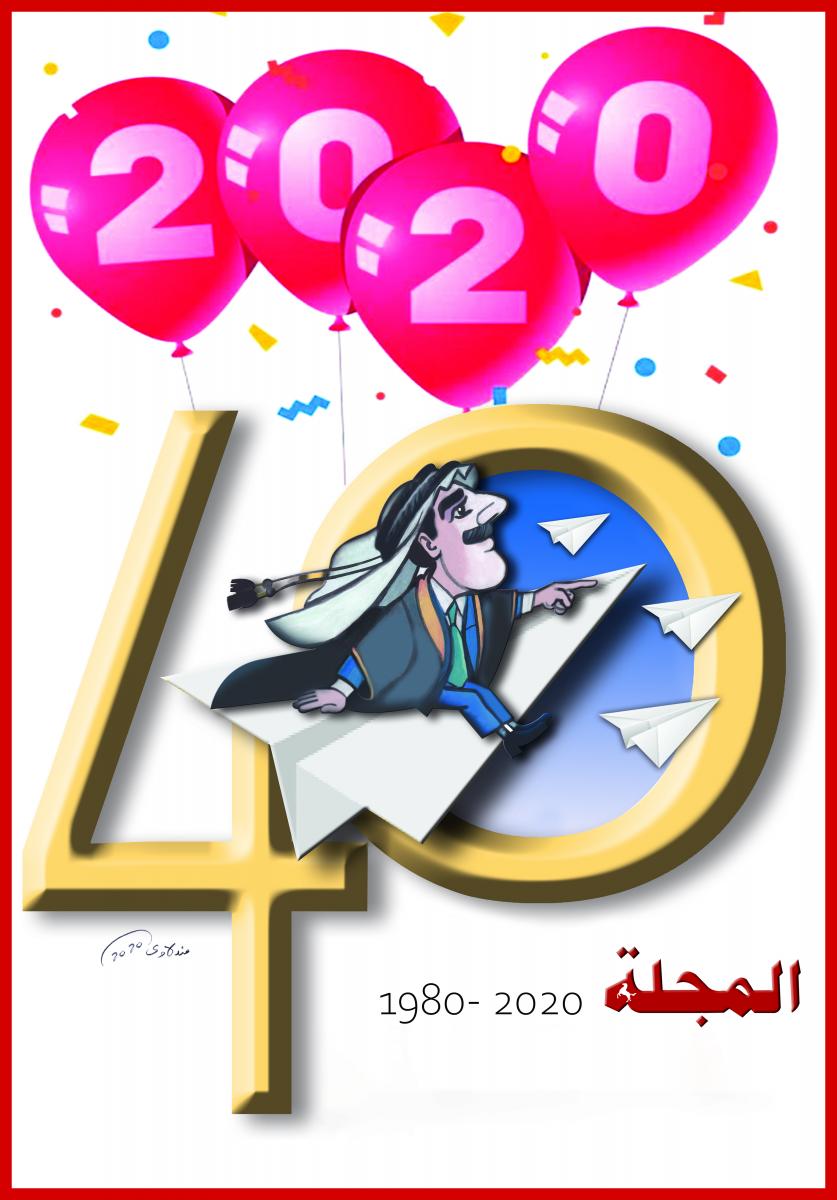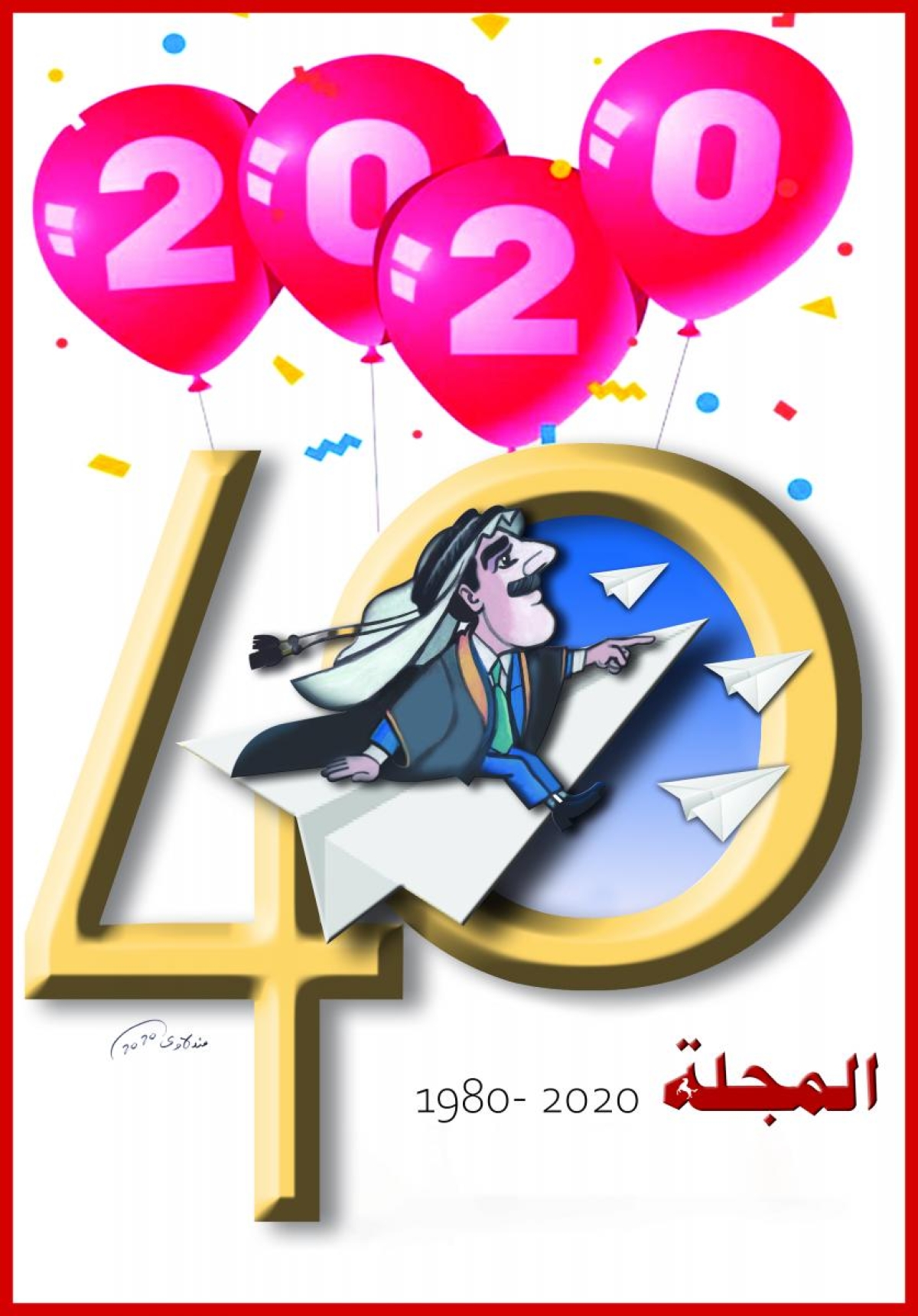
What’s in a Name?
The name “Majalla” literally means “magazine” in Arabic. Some might wonder why our publication has such a simplistic name. When plans for the magazine were being laid out in the late 1970s, it was originally going to be named “Majallet Asharq Al-Awsat” (Middle East Magazine), but then the founders opted for a shorter name “Asharq”. However, that would have led to other problems as another Saudi magazine already had that name, as such founders Hisham and Ali Hafez decided to simply use the first part of its original name and thus the moniker “Al-Majalla” was born. The first issue of Majalla was published in February 1980 and since then it has become one of the most influential publications in the region and beyond. Majalla was founded as the sister publication of the Asharq Al Awsat newspaper, both of which are subsidiaries of the Saudi Research and Marketing Group, a media company founded by Prince Ahmad Bin Salman Bin Abdel Aziz in the year 1978.Beyond a Cover
The first issue of Majalla had an eye catching cover which featured an American soldier, and the caption “What is America Planning?” Right off the bat, this showed that Majalla is a political affairs publication. Nevertheless, its founders wanted Majalla to be unique and were adamant that articles featuring other topics are included. Unlike other Middle Eastern political affairs magazines, Majalla became known for having articles on art, literature, technology, cinema, fashion, health and a menagerie of different topics.
A Variety of Topics and a Balance in Opinions
Prince Ahmad Bin Salman had a philosophy when it came to news publications: always strive for a variety of topics and a balance of opinions. Asharq Al-Awsat followed this philosophy and Majalla is no different. As a result, Majalla always avoids zealous political views, and always aims to have writers who present varied opinions. This way, Majalla reflects our diverse world teeming with different point of views.
Influential Writers Who Have Written for Majalla
Many of the most influential writers in the Arab world wrote for Majalla. Late Sudanese writer and author of “Season of Migration to the North”, Tayeb Salih used to write a weekly column for Majalla where he would explore various literary themes. Readers enjoyed his simple writing style that was easy to digest.
Egyptian writer Ahsan Abd El Qadoos also had a weekly column entitled “Debates at the Political Café”. Although this was a political column, Abd El Qadoos presented in the themes in a creative way through a dialogue between an elderly man and young man who met at a local café to debate political events that happened between 1976 and 1978. In doing so, Abd El Qadoos eloquently presented the generational divide when it comes to political views.
Other writers who graced this publication include Egyptian Nobel laureate Naguib Mahfouz, satirical writer Mahmoud El Sadany, as well as Fahmy Huwaidy, Ahlam Mostaghanamy, Latifa El Sholan, Jafar Abas, Ali El Amem, and British diplomat Patrick Seal.
During a certain time, Kurdish poet Buland Haydari was in charge of the publication’s cultural section, and his major contributions greatly expanded the section. If any of our readers likes the fact that a large section of the magazine is dedicated to art, literature and film then you have Haydari to thank for that.
To this day, esteemed individuals still write for Majalla, for instance there is American diplomat Dennis Ross, political analyst Joseph Braude, Hanin Ghaddar of the Washington Institute and a number of other talented journalists from around the world.
Editors-in-Chief from Across the Region
All great news publications need great Editors-in-Chief. Despite the fact that Majalla is a Saudi publication, not all of its heads were from Saudi Arabia. For instance, Majalla has had some Egyptian chiefs such as Emad El Din Adeeb, and Lebanese chiefs such as Abd El Karim Abo El Nasr. Naturally, Majalla also had many Saudi editors-in-chief such as Uthman El Ameer, Abd El Rahman El Rashid and his vice chief Matar El Ahmadi, Abd El Aziz El Khamis, and Hani Nakashbondi. This tradition of cross regional editors-in-chief continues to this day as the acclaimed Lebanese writer and journalist Ghassan Charbel is our current editor-in-chief.
Expanding the Publication’s Horizons
Majalla started out as an Arabic language magazine, however since its founders wanted the publication to have a wide outreach, they soon expanded the publication’s lingual range. Soon enough, there was an English version of the publication began circulating, then a French version and finally a Farsi version. This range of languages increased our global readership, and more importantly presented a variety of topics and news pieces. Even when two of our publications have stories on the same topic, it is often the case that English language writers present a different take subject than Arabic language writers, and the same can be said for Persian and French language writers. As such, Majalla has a unique distinction of presenting issues through different lenses, thereby giving readers a complete picture of the current affairs concerning the world today.
More than Words
Like many other Arabic publications, Majalla prides itself for housing some of the most talented caricature artists from the region. One of the most famous caricature artists who drew for Majalla was Lebanese artist Mahmoud Kahil, who was known for signing his artwork with the penname “El Ghorab” (which literally means The Crow in Arabic). Today, Ali El Mandalawy provides us with the caricatures that accompany our Profile section, which gives a brief biography of prominent individuals of the present and past. Majalla has always had an eye for the unappreciated art of caricatures, for instance the publication interviewed many important caricature artists from the region such as Mohamed El Zawawy, late Palestinian artist Nagy El Ola and Sudanese artist Elshab Elmaqdad. Furthermore, in 1989, Majalla hosted the first “Arab Caricature Festival” in London, which invited Arab caricature artists who worked in Arab publications.
Overcoming Adversity
The Middle East is never an easy place to for press publication. Throughout the last 40 years many news outlets have been shut down either through poor sales, or forced closings. However, Majalla has been able to overcome these challenges, and remain one of the mainstays of Arab weekly news. Being based in London gave Majalla an advantage of learning the British way of press, in which publications attract readers through diverse opinions rather than enforced views.
40 Years Strong
French writer Albert Camus famously said that journalists are the “historians of the moment”. For the past 40 years, Majalla has been recording the most important news stories that have been rocking the region as well as the globe. The last 40 years of Majalla issues can now be seen as a historical archive of what went on for the past 4 decades. We here at Majalla would like to thank our readers who have stuck with us since 1980, and would like to welcome all new readers for whom this might be their first time reading our magazine. We hope to see you all again in 10 years time when we start celebrating 50 years of publication. So from the writers, editors, artists, page designers and every member of our staff, thank you for all your support, a magazine is nothing without its readers.







